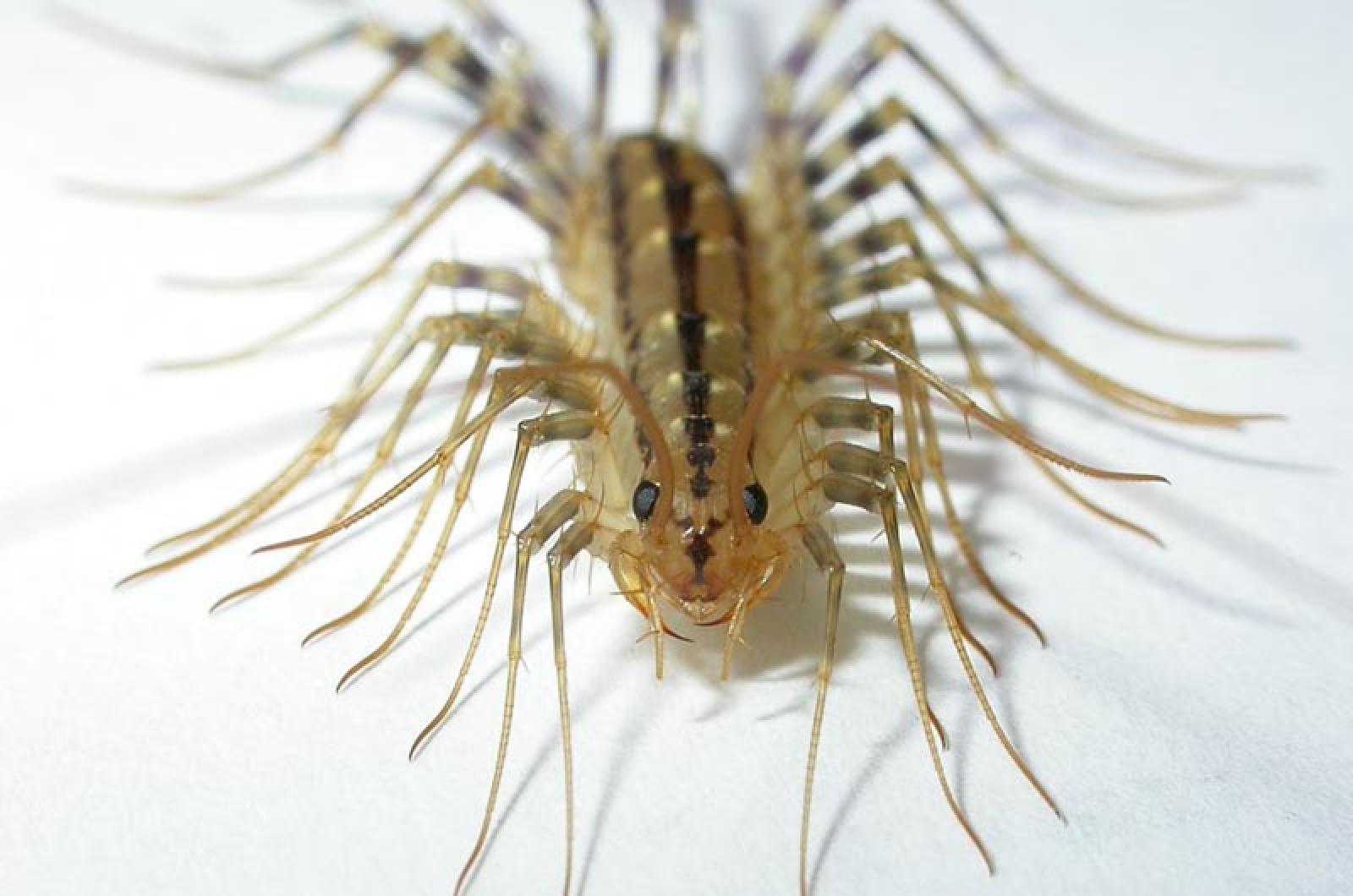Ladies, hike those skirts up!
That might just be the only way to avoid tangling with the house centipede high-tailing it for the shelter under your frock. In a newsletter dated 1902, C.L. Marlatt, a US Department of Agriculture entomologist, described this despised insect this way.
“It may often be seen darting across floors with very great speed, occasionally stopping suddenly and remaining absolutely motionless, presently to resume its rapid movements, often darting directly at inmates of the house, particularly women, evidently with a desire to conceal itself beneath their dresses, and thus creating much consternation.”
You can’t blame the “inmates” for their consternation. House centipedes are incredibly creepy and very fast. With their 15 pairs of legs, they can run up to 1.3 feet per second! And as far as looks go, you could call them leggy blondes, but the reality is far from fantasy.
House centipedes are golden yellow insects with three discernible brown stripes down the length of their body. The longs legs are impressive, with the last pair extending behind them twice the length of their one-inch body. It is all of their legs working together that give them the look that makes many of our skins crawl (though not as fast as that insect can run).
In most species, the babies are always cuter than the adults, and it is likely so for the house centipede. When the insect first hatches, it only has four pairs of legs, which sounds much more attractive to me.
Unfortunately, the first set of legs is modified to inject venom into its prey. Generally, this ‘stinger’ cannot penetrate human skin, so it is unlikely (though possible) to be injured by this insect. A fifth pair of legs is added during the first molt, and the leg numbers increase by two pairs for each of the next five molts. The house centipede stops its leg count at 15, though other species do justice to the alias, “hundred leggers,” some having up to 177 pairs!
The house centipede is not too attached to those lengthy legs. If danger approaches and they are caught, they can let a leg go. No worries, since the centipede will regrow it during the next molt.
Now is the most common time to find these curious creatures in our homes. They prefer warm, moist, dark places and are generally found under rocks, logs and boards. However, as the weather turns, they crawl through the cracks and crevices of our homes looking to find a cozy locale for the winter.
You will likely see them at night since they are nocturnal predators, though sometimes they get stuck in your tub and beat you to your morning shower. The favorite foods of house centipedes are other insects, and they will happily feast on ants, spiders, silverfish, cockroaches, bed bugs and termites. With that list, it makes it hard to decide which is worse, having this predator around or not having this predator around!
Centipedes were not always a problem in these parts. Not native to our continent, they originated in the Mediterranean region and were introduced into Mexico and the southern United States. By 1849, they were in Pennsylvania, and from there crawled their way northward, arriving in New York in 1885 and Massachusetts by 1890. And thence to your home.
Creepy though they may be, centipedes have been the inspiration for some wit and humor for those who ponder their peculiar podiatry. My current favorite is this, by Georg Lichtengerg.
“Some men come by the name of genius in the same way as an insect comes by the name of centipede. Not because it has a hundred feet, but because most people can’t count above fourteen!”
Suzan Bellincampi is director of the Felix Neck Wildlife Sanctuary in Edgartown.




Comments
Comment policy »